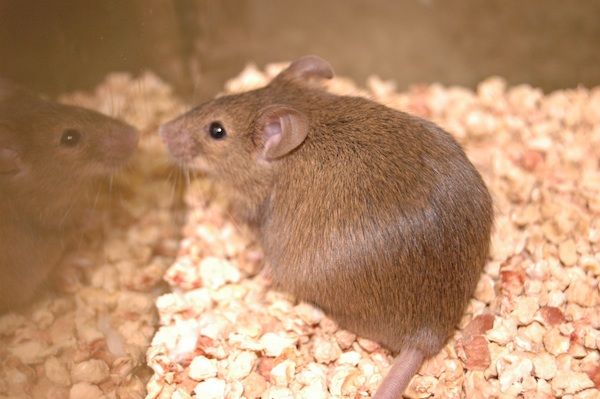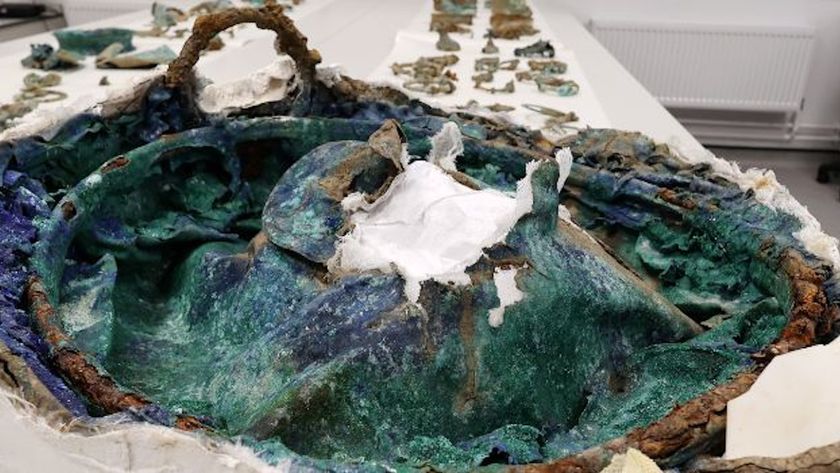Meet the Mice with Two Dads: A Reporter's Squeaky Lab Tour

HOUSTON – The problem with the mice with two fathers is that they're distractingly adorable. Sure, they're a mean feat of genetic engineering and a possible first step on the long road toward gay couples creating biological children. But with their tiny bewhiskered faces and itty-bitty paws, it's hard to ignore: This is scientific progress at its cutest.
I came to this conclusion while holding one of the mice in a basement lab here at MD Anderson Cancer Center. The mice are a reproductive first: Instead of having chromosomes from both a mother and a father, these critters get all of their DNA from two dads. Researchers led by MD Anderson geneticist Richard Behringer announced the existence of the mice Dec. 8 in the journal Biology of Reproduction. When I found out the babies were still alive and thriving, I knew I had to meet them.
Babies from two daddies
Behringer, a soft-spoken man who seems to choose every word with care, was kind enough to let me do just that. We met in Behringer's eighth-floor office, which contains, among other things, a butterfly net and a copy of Dan Brown's "The Da Vinci Code." When I mentioned the latter, which was wedged between "Manipulating the Mouse Embryo: A Laboratory Manual" and Lewis Thomas' "The Lives of a Cell: Notes of a Biology Watcher," Behringer rolled his eyes.
"I couldn't put that stupid book down," he said.
It took Behringer and his team two years to see the mouse project through to completion. To coax viable baby mice from the genes of two males, the researchers engineered cells taken from male mice so they became stem cells that could then become any tissue. Those cells are called induced pluripotent stem cells, or iPS cells. Because of natural genetic accidents, some of these male iPS cells lose their Y chromosome, becoming XO cells with a single sex chromosome instead of the typical XY genotype.
The researchers then injected the stem cells into a regular mouse embryo, creating a sort of genetic hybrid, or chimera. The cells from the blastocysts would be normal, two-chromosomed XX cells. But the cells from the iPS injection would be single-chromosomed XO cells.
Sign up for the Live Science daily newsletter now
Get the world’s most fascinating discoveries delivered straight to your inbox.
When the chimera mated with a regular male, some of their babies contained only genes from the regular male and the male iPS cells. [Graphic: How Mr. and Mr. Mouse Had a Baby]
"It's a little twisty, because it is a female giving birth, and it is her eggs," Behringer said. "But genetically, it's his genome."
Brown and black mice
With the backstory explained, we headed downstairs to meet the mice. After a ride in a rodent-scented elevator (imagine the smell of a vet's office), it was off to the locker rooms, where one of Behringer's graduate students helped me suit up for my visit. No one goes into the live animal area without shoe-covering booties, a long yellow smock, gloves, a surgical cap and a face mask. The precautions aren't to protect humans, the grad student explained; they're to keep the mice safe from any bugs we might carry.
The mice reside in a room full of long metal shelves, all stacked with amber-colored cages. Behringer selected two cages, which we took to a spare room next door for a closer look.
Even for a novice, it was easy to tell which mice had two fathers and which came from a more traditional parentage. That's because Behringer and his team used brown mice to create the male stem cells that contribute to the two-fathers' genome. The normal embryo they injected those stem cells into came from a black mouse. So the babies genetically related to the embryo are black, while those genetically related to the stem cells are brown.
The daddy-only mice are completely normal, Behringer said. They certainly act no different from their black counterparts, sniffing around their cages and pulling themselves up the sides like they're doing chin-ups. I held one in my hand, and it sniffed my glove thoroughly before peering down at its cage mates with black, bulgy eyes. [Photo: Mouse with two daddies]
The research team produced 27 of the double-daddy mice, and Behringer said he'll likely mate some of them to demonstrate that they're fertile (there's no reason they shouldn't be, he said). He's now working to see if he can take stem cells that have lost their second sex chromosome (the X-only iPS cells used back in the beginning of the mouse experiment) and put a replacement chromosome back in. In mice, offspring with just one X chromosome — an XO genotype, in other words — do just fine. In humans, most embryos with only one sex chromosome die. Those that do survive with an XO genotype have Turner syndrome. Women with Turner syndrome are infertile and may have other health problems.
If the transfer techniques work, scientists could start with male cells, turn them into XO stem cells, and then add in new X chromosomes, effectively turning a male body cell into a female stem cell.
Hurdles for humans
Solving the Turner syndrome problem would get the procedure past one barrier for use in humans, but there are two other major hurdles, Behringer said, "and they're big ones."
First, the induced stem cells used have to be medically safe, a standard not yet passed in humans. (Induced pluripotent stem cells have a tendency to become cancerous, even in mice.) The second problem is turning a stem cell into an egg or a sperm. (In the case of two men reproducing, you'd want an egg.)
The chimera mice Behringer and his team created are essentially a living, breathing way to turn stem cells into eggs, but with the legal and ethical issues surrounding human chimeras, the idea is a "non-starter," Behringer said. "You won't make a human chimera."
That means it's back to the lab to figure out how to make a switch from stem cell to sex cell in the laboratory. Researchers have made progress, getting stem cells to a precursor "primordial germ cell" stage, but they haven't figured out how to keep the cells alive and growing.
"That's why it's really important to do basic research on germ cell development at all these different stages to understand what are the molecules that regulate this process," Behringer said. "If you knew that, you could start mimicking it."
Even if scientists can overcome all of the technical barriers, it won't be so easy to remove women from the reproductive equation. After all, even the mice with two fathers aren't precisely motherless.
"You need a uterus," Behringer said, adding dryly, "People always forget this."
- 10 Profound Innovations Ahead
- 5 Myths About the Male Body
- The History and Future of Birth Control
You can follow LiveScience Senior Writer Stephanie Pappas on Twitter @sipappas

Stephanie Pappas is a contributing writer for Live Science, covering topics ranging from geoscience to archaeology to the human brain and behavior. She was previously a senior writer for Live Science but is now a freelancer based in Denver, Colorado, and regularly contributes to Scientific American and The Monitor, the monthly magazine of the American Psychological Association. Stephanie received a bachelor's degree in psychology from the University of South Carolina and a graduate certificate in science communication from the University of California, Santa Cruz.











